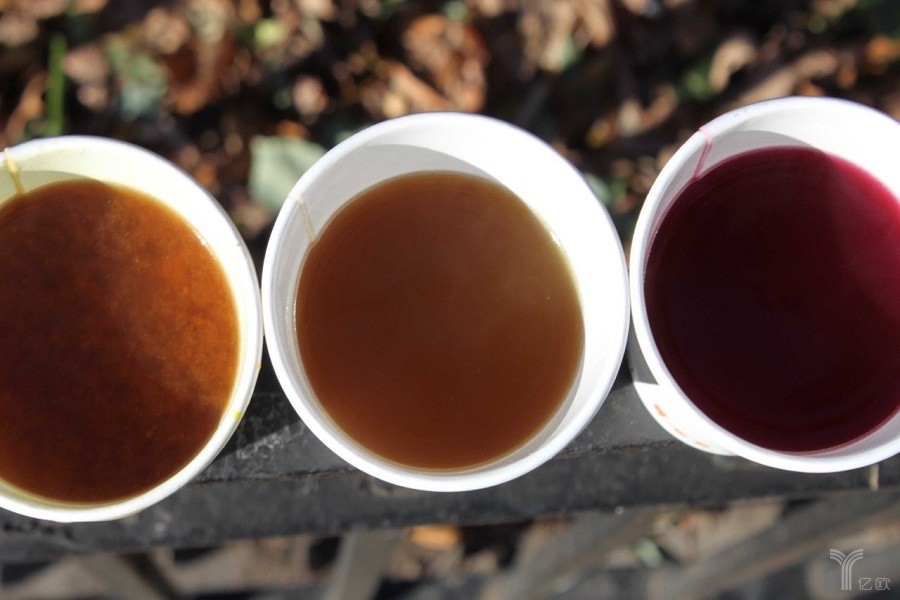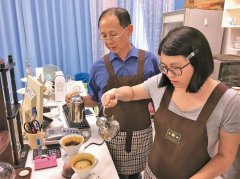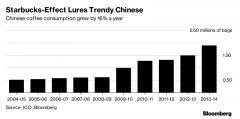Wearing a coffee coat, you are such a broth!

For professional baristas, please follow the coffee workshop (Wechat official account cafe_style)
In the United States, there is such a store: they sell big bone soup in coffee cups and become popular unexpectedly. There is a queue at the door every day, selling at least hundreds of cups a day, and even launched a cookbook on big bone soup in 2015. And caused businesses all over the world to follow suit. How did they do it? How to use scene thinking to turn waste into treasure?
This article was first published in the shopkeeper's strategy, and the author, why Shan, was forwarded and edited by Yiou for reference by the industry.
In fact, the big bone soup in the tide is not a clear concept. It is handled very much like consomme in a classic French meal, but an important part is that the bones should be roasted first. Compared with ordinary Western-style clear soup, it takes much longer to cook-ten to twenty hours is the beginning. Chefs will add some acidic seasonings (such as Apple Cider Vinegar) to separate out more nutrients, or add some chicken feet to add gum, which is all too common in Asian cuisine.
From small takeout window to trendsetter
The story begins in the fall of 2014. Hearth, a restaurant from the East Village of New York, is famous for its high-end restaurants, but it also faces the same problem-soaring rents. In the face of a 65% increase, it was urgent to find a place to make quick money, and they chose big bone soup. The shop usually needs to cook for cooking, so it is not so distracted.
The restaurant soon opened a small takeout window called Brodo. The big bone soup was taken away in a paper cup like coffee. What kind of soup? To name a few: ginger grass-fed beef soup, organic chicken soup, and the signature Hearth stock, which includes two turkeys, 40 pounds of beef bones, and 15 chickens and ducks. In front of the hardworking and brave Asian people, the exclusion of the terms "grass feeding" and "organic" is simply familiar, and it is much simpler compared with Gastrodia and Eucommia ulmoides gum undersea coconut here.
But this is the soup. The smallest cup is about 25 yuan, about the same as our Starbucks here, and the largest cup is 9 dollars. There are also large refrigerated cans of about 80 yuan, which can be taken home and shared.
At first, the restaurant just hoped that the window would give the store a subsidy of about $300 a day, but it became an unexpected hit, lined up at the door every day, sold at least hundreds of cups a day, and even launched a cookbook of big bone soup in 2015.
The fashionable big bone soup business is springing up everywhere.
All over the United States, Los Angeles, San Francisco, Austin, Portland and other big cities have followed New York's pace and opened their own fashionable big bone soup business.
New York's Springbone restaurant itself is a healthy restaurant that offers gluten-free and prehistoric diets. At the heart of their menu is big bone soup, which is divided into chicken, beef and vegetables, and even sells big bone soup popsicles (hard to imagine).
Picnik, a restaurant in Austin, Texas, paired chicken stock with the latest equally fashionable buttered coffee; Bone Deep& Harmony offers a big bone soup house that delivers three liters of soup a week for $162 a month.
Oliver Weston Company specializes in selling large cans of big bone soup (half a liter, 1 liter or more), starting at $7, with fierce competition from Osso Good, Bare Bones, Kettle & Fire and other companies.
In addition to these new brands, big companies can't help it. Chain Dig Inn offers vegetarian broth, which is said to have been boiled out of leftovers from processed vegetables in the kitchen, while Panera Bread, which we reported earlier focuses on healthy simple meals, has its own big bone soup products. Oh, by the way, big bone soup has been in the food of the Los Angeles Lakers.
The pursuit of big bone soup across the United States has pushed up the price of big bones, which once cost $30 for a whole case of about 20 kilograms; now it costs more than $4 a catty.
The biggest beneficiaries of waking up from the dream should be ranches and butcher shops, which make the previously insignificant part of the industrial chain a rare place to live, while restaurants that emphasize the source of ingredients and home-made processing have also found a new direction for recipe development.
The original brand of Proposition Chicken in San Francisco is free-range native chickens, slaughtered and cooked on the spot. Raw chicken bones are used to make soup, while the bones left after roasting can only be discarded, but now they are just using the east wind to make big bone soup and gain a good reputation for making the best use of things.
Using scene thinking to transform waste into treasure
Broth is sold as coffee, providing a kind of through-and-through scene-changing thinking. A single item that seems to be running out of water may be able to shine in a new way on another stage-and get rich. Here are a few simple steps to find such a single item.
First of all, choose a product first, it is not weird, but it has a sense of distance and mystery.
Big bone soup is not so common in the daily diet of European and American families, but it is not all exotic food, as introduced at the beginning, it exists in traditional cooking methods, but the current way of life does not allow people to spend so much time on one kind of food. At the same time, today, these brands put more emphasis on the sources of ingredients than before: grass-fed cattle, ground chickens, organic vegetables, local small-scale grazing, etc., adding a new coat to the old flavor. This feeling of "once owned", today, looking back from a new perspective, there is a surprise of regaining the treasure, that is, the two major characteristics that a single item that plays through the scene needs to have.
Secondly, the story should be told in a fashionable way.
No matter how deep the product is from memory, it will be packaged in the current storytelling method, or to meet the current dietary needs that people are most concerned about. The most important selling point of big bone soup is pure primitive health. Nowadays, more and more people who pursue Paleo Diet (meaning to pursue the diet of the ancestors of the former agricultural society, eating directly accessible foods such as vegetables, fruits, meat, fish and nuts, but without touching processed foods such as grains and dairy products) regard big bone soup as a panacea. They just think that this long-term cooking method will help vitamins and minerals in bones enter the broth. Play a role in regulating the digestive system, detoxification and acne, strengthening muscles and bones, moisturizing skin and hair, etc.-although these effects have not been confirmed by convincing scientific experiments.
Finally, confirm a clear scene.
After crossing over, what on earth is it? This must not be swayed from side to side. As suggested on Brodo's official website: ask people to rethink what they should drink in the morning or afternoon, whether they should replace caffeine with a more "nutritious" drink, or look for a less guilty eating habit before dinner. The positioning of the big bone soup is very clear. It is no longer a soup for fresh use or a bowl of hot soup in the appetizer, but a drink, or, to be exact, a take-out-based functional drink.
In addition to the packaging that can be completely disguised as a cup of coffee, most big bone soup stores also offer a variety of seasoning services, such as Brodo, where you can choose to add chili oil or mushroom water to the soup to add complexity to its flavor. The price of each ingredient is 75 cents, just like you can choose your own flavor syrup at Starbucks, and its customization and seasoning model is exactly on a par with the beverage, not the soup itself-after all, soup doesn't have a mature and independent category. Crossing is a road of no return, we only look at where the terminal is and whether the terminal is mature, so we look for a space that can be used here.
The imported steak sold in sliced pieces, which we mentioned earlier, is an example of a type of big bone soup, which passes the "dimensionality reduction" of the consumption place, so that people can eat steakhouse-quality beef in the gourmet floor of the shopping mall. As for broth, there is no such sense of difference between consumption grade and environment, it just brings a kind of raw material in the kitchen into the path of creating a single product, when the broth adds more added value commonly used in brand marketing, its premium happens naturally.
Important Notice :
前街咖啡 FrontStreet Coffee has moved to new addredd:
FrontStreet Coffee Address: 315,Donghua East Road,GuangZhou
Tel:020 38364473
- Prev

In order to let the daughter overcome the social barrier, the loving father helped to open a coffee shop.
Liao Xuexian (left), a resident of Douliu in Yunlin County, signed up for classes to learn coffee expertise and accompany her daughter to build a coffee shop in order to help her daughter integrate into society. Professional barista communication please follow the coffee workshop (Wechat official account cafe_style) Today is Father's Day. Liao Xuexian, owner of Kona Coffee in Douliu City, Yunlin County, is not good at communicating with others because his daughter Xiao Xuan is not good at communicating with others.
- Next

Chinese millennials love coffee more than tea, Nestl é and Starbucks are optimistic about growth potential.
Professional baristas Please pay attention to the Coffee Workshop (Wechat official account cafe_style) although Chinese people are traditionally used to drinking tea, more and more young millennials go to coffee shops rather than teahouses, thinking it is more comfortable. Large coffee chains, including Starbucks (SBUX-US), have noticed this change in consumption trends. According to Peng
Related
- Why does hot American coffee taste bitter? Difference in proportional concentration between hot American and ice American
- Is espresso stored overnight in the refrigerator harmful to your body? Is frozen coffee better than freshly ground coffee?
- What parameters and proportions of water temperature should be used to grind and brew fresh coffee beans? Why can't I drink freshly roasted coffee right away?
- Customers have "changed" Manner's new products! Shop assistant: Please don't mess around!
- Remove sockets in customer areas at Starbucks stores?! Netizen: I won't go if I really tear it down
- What is the difference between the taste steps of sun-dried coffee and washed coffee? Why is sun-cured coffee sweeter and washed coffee sour?
- The recipe for salty grapefruit dirty is revealed! Coffee Festival salty grapefruit dirty coffee making materials parameters ratio milk share!
- How about the flavor of Sunlight 74158 at Sidamo Banshaha Mathieu Processing Factory in Ethiopia? 74158 Share the proportion of coffee brewing parameters!
- What effect does Italian American coffee with filter paper have? Will coffee taste better if it is put on filter paper at the bottom of the powder bowl?
- What is the color difference in coffee beans? What are the characteristics of honey processed coffee beans? Why are the anaerobically treated coffee beans uneven in color?

